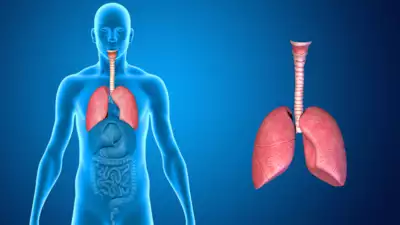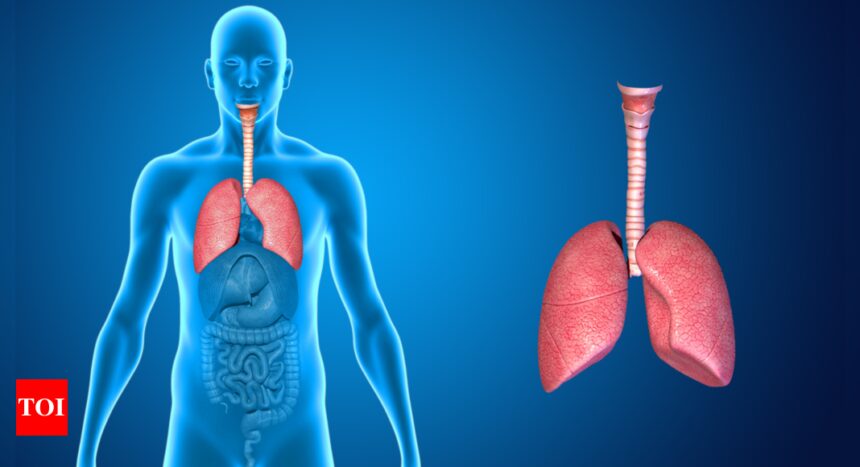
Lung Cancer is perhaps one of the most common and deadly forms of cancer in the world, including India. For many years, lung cancer has been associated with smoking and the main intervention that provides health education for the disease is to stop smoking. However, recent studies have revealed a surprising trend and chapter: The situation is more complicated by the fact that the increasing number of lung cancer patients is not linked to smoking. This trend has caused much concern because it is changing the demographics of lung cancer patients that is changing the concept of risk factors associated with lung cancer among non-smokers.
Lung cancer is also prevalent in India and new cases are reported every year in the country. The majority of these cases are blamed on smoking, and research shows that more than seventy percent of lung cancer cases in men are the result of the use of tobacco products. But lately an emerging problem is the rise in lung cancer among people who have never smoked. However, according to some research, non-smokers are now accounting for a large proportion of lung cancer patients in India especially women.
The growing number of non-smoking lung cancer patients in India has baffled medical researchers and health professionals. While smoking remains the leading cause of lung cancer, nonsmokers are now at higher risk due to a number of environmental and genetic factors. One of the main factors behind this increase is exposure to air pollution, which is a major public health problem in India. The country is home to some of the most polluted cities in the world, where levels of particulate matter, industrial emissions, and vehicular pollution are extremely high.
Long-term exposure to these pollutants can damage the lungs, increase oxidative stress, and lead to the development of cancer cells. Many studies show a strong relationship between air pollution and lung cancer, especially in non-smokers, and say that the increased level of pollution in urban areas causes an increase in cases.
Common symptoms of lung cancer
Indoor air pollution is another significant risk factor, especially in rural India where the use of biomass fuels like wood, coal, and cow dung for cooking is widespread. These fuels release harmful pollutants, including particulate matter and carbon monoxide, into the air, which can be inhaled over long periods of time and cause lung damage. Women, who are primarily responsible for cooking in many households, are disproportionately affected by indoor air pollution and therefore have a higher risk of developing lung cancer. Despite the growing awareness of air pollution, efforts to reduce its effects have been slow, and it remains a major contributor to the increase in lung cancer cases in non-smokers.
Genetic factors also play a role in the development of lung cancer in non-smokers. Research shows that individuals with certain genetic mutations may be more susceptible to the carcinogenic effects of environmental pollutants and other factors. This genetic predisposition can increase the chance of lung cancer in individuals who have never smoked, although such cases are still rare. However, with increasing environmental exposure, the number of nonsmokers with a genetic susceptibility to lung cancer may increase.
Another factor contributing to non-smoking lung cancer is changing lifestyle patterns in India. As countries become more urbanized, more people move to cities with poor air quality and adopt a sedentary lifestyle that can lead to other health problems. Furthermore, increased consumption of processed foods, alcohol, and an unhealthy diet may also contribute to a higher incidence of lung cancer in non-smokers. Although these factors are not directly related to lung cancer like smoking or pollution, they can weaken your immune system and make you more susceptible to cancer.
The increase in cases of non-smoking lung cancer has significant public health implications. This challenges the conventional wisdom that smoking is the leading cause of lung cancer and calls for greater focus on environmental and lifestyle factors that may also contribute to the disease. For example, air pollution, which affects millions of people every day in India, needs to be addressed as a major risk factor for lung cancer in both smokers and non-smokers. Improving air quality through stricter regulations on industrial emissions, reducing vehicle pollution, and transitioning to cleaner energy sources can reduce the risk of lung cancer.
In addition to addressing environmental pollution, greater awareness should be raised about the risks of indoor air pollution, especially in rural areas. Providing clean cooking alternatives, such as electric stoves or liquefied petroleum gas (LPG), can reduce exposure to harmful fumes from biomass fuels for women and children. Public health campaigns that focus on these issues, as well as the need for screening and early diagnosis, can help reduce the burden of lung cancer in India.
Finally, the increase in lung cancer among non-smokers in India is a trend that needs urgent attention. The increasing prevalence of air pollution, indoor pollution, and genetic susceptibility have led to an increase in lung cancer cases among people who have never smoked. Addressing these environmental risk factors, along with efforts to reduce smoking rates, will be critical to combating this silent epidemic. Public health initiatives focused on pollution control, cleaner cooking technologies, and genetic research, along with improved screening programs, can help reduce the impact of lung cancer in India and reduce its incidence among non-smokers.
(By Dr. Aravind Badiger Technical director BDR Pharmaceuticals)




